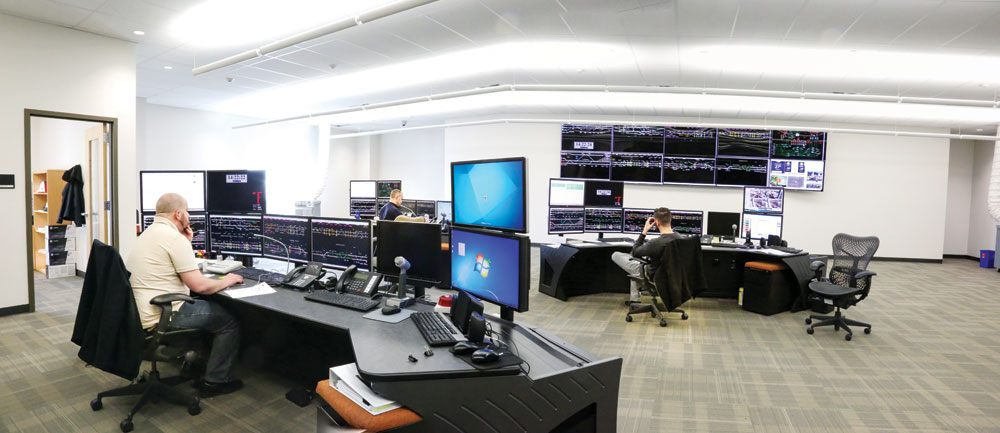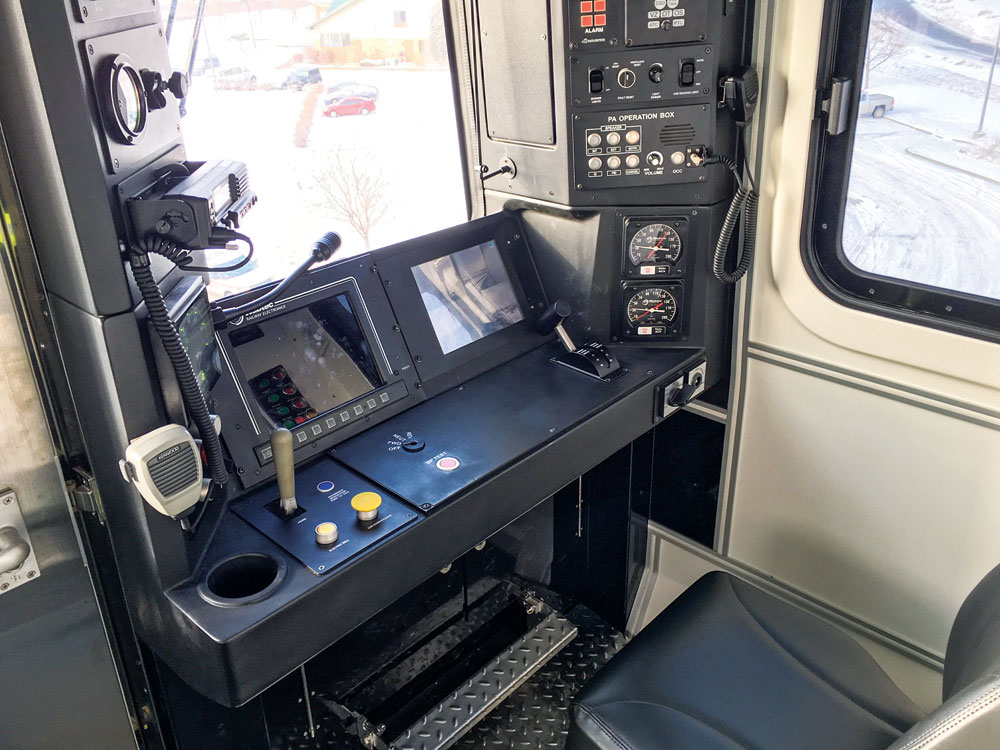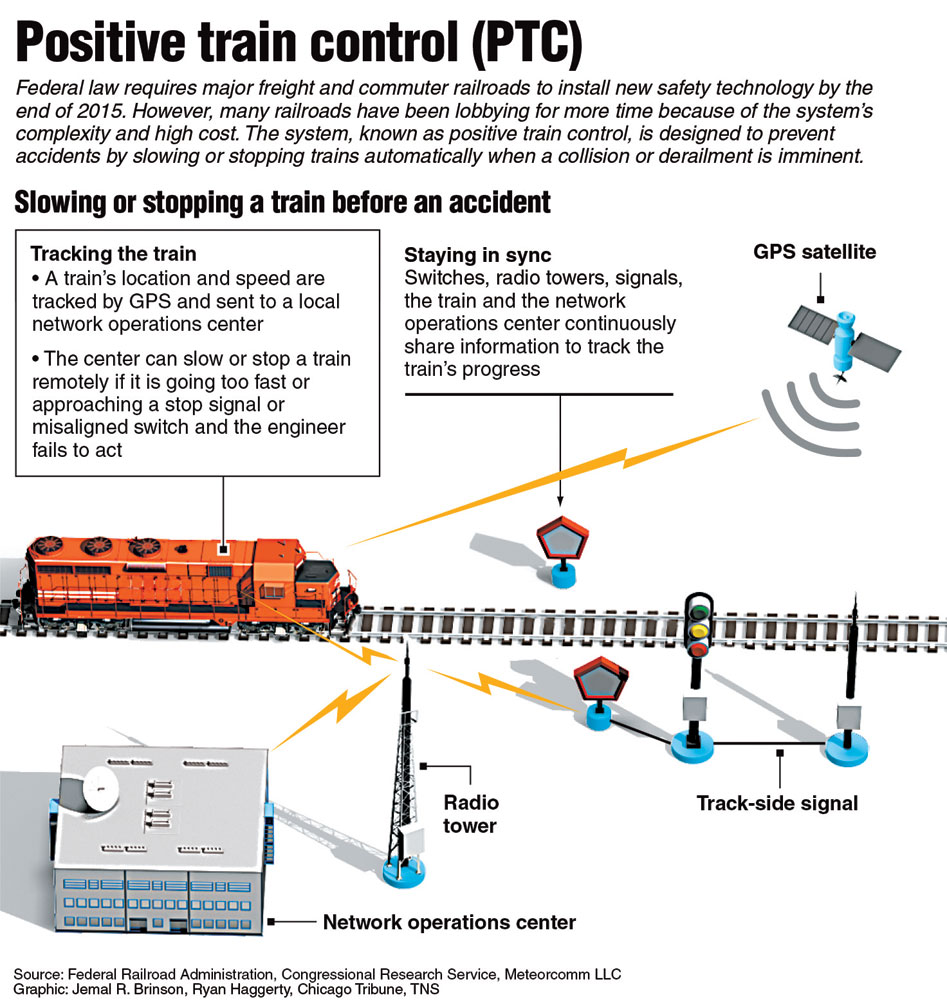
At RTD’s Operations Control Center, RTD and its concessionaire staff from Denver Transit Partners keep track of commuter train movements.
The April 22 opening of the A Line not only inaugurates commuter rail service in Colorado, it also signifies deployment of what some call a revolution in rail safety technology. “Positive train control” (PTC) adds a high tech level of redundancy and sophistication to historic methods of avoiding what are euphemistically referred to as “rail incidents.”
The software-based system knows the location of rail cars with precision in real time and can stop trains in the case of operator error or disability. PTC was mandated by Congress in 2008 for all passenger rail service and most freight trains. RTD’s University of Colorado A Line is the first in the country to implement PTC in a new rail service. Elsewhere, PTC is being implemented incrementally as a retrofit of existing rail systems. Congress’ original 2015 deadline for full implemented was extended to 2018 in response to a petition from the rail industry.

PTC provides real time information about train locations foot-by-foot the length of the commuter rail system to prevent incidents that might arise from operator error.
As rail passenger service has expanded in recent years, momentum grew for improving on traditional train control systems. That momentum reached a new level following the horrific 2008 train collision north of Los Angeles involving a Metrolink commuter train and a freight train. 25 people were killed when a distracted operator ignored a red stop signal.
More recent incidents such as the derailments in 2013 of a Metro-North train in the Bronx and of an Amtrak train in Philadelphia in 2015 are referred to as “PTC preventable” according to Ken Huang, RTD’s Signals System Manager. In other words, if PTC had been implemented, those incidents could have been prevented.
Huang said PTC has four basic functions: to prevent train collisions, train overspeed, and unsafe movement over misaligned switches, and to protect track maintenance workers. Switches occur on the A Line in multiple locations where the double track converts to single track, and at intervals along the line where rail sidings and connections between the double tracks are need to facilitate temporary storage or re-routing of vehicles for maintenance of other purposes.

Peter Strange, Denver Transit Partners
Denver Transit Partners’ Peter Strange, Project Director of Denver Transit Systems, said the PTC developed for the A Line will incorporate a unique capability to calibrate train speeds and stopping distances at the line’s 11 at-grade crossings with a goal of minimizing the time when warning gates are down. The A Line system has developed from a base system created for the Union Pacific and Burlington Northern freight rail systems. Software and other system components were adapted to address some fundamental differences between freight rail and passenger rail – the long, slow and infrequent trains of freight as compared to the short, fast and frequent service provided by commuter rail.

Kevin Huang, RTD’s Signal Systems Manager
While PTC is considered a “fail safe” system, it will not prevent all incidents such as if a motorist decides to drive around warning gates to cross the tracks.
Both Huang and Strange say PTC on the A Line is progressing well through all the tests mandated by the Federal Railroad Administration (FRA) and will be operational by opening day. A spokesman for the FRA, speaking on background, told the Front Porch that “RTD has told the Federal Railroad Administration that it hopes to have Positive Train Control operational by the scheduled opening of the A line. FRA continues to work with RTD to have Positive Train Control implemented correctly, safely and efficiently. However, RTD has to follow and meet all of FRA’s approval processes, including having its safety plan approved, to have its PTC system fully certified.” The spokesman added that Congress’ extension of the mandate to 2018 provides operators additional time to implement PTC.
The A Line PTC will operate initially in what the FRA calls “revenue service demonstration.” Once reliability is confirmed, after approximately six months, the PTC will be granted full certification.
RTD officials say the system developed for the A Line is “future proof” of the PTC that will be used on the other commuter rail corridors in the FasTracks system.





“For nearly a year before the $1.2 billion rail line opened on April 22, RTD officials knew about the crossing gate glitches, but they were determined to launch the service on time.” May 21: A month after the DIA rail system opened, the system remains a colossal failure at this point, causing ceaseless unbearable congestion and delays at all of the crossing points. The city pushed to get the trains running on their artificial due date, to great hurrah- a great false promise. Why such a system would be put into use before it has been thoroughly proven and tested is a testament to the idiocy of those in charge of the roads and rail systems. The citizens of Denver are mere guinea pigs, while those officials and corporate executives get fatter on tax dollars that paid for this grand experiment- reminds me of the Great AUTOMATED BAGGAGE SYSTEM at DIA years ago. So far, there’s nothing positive about it.